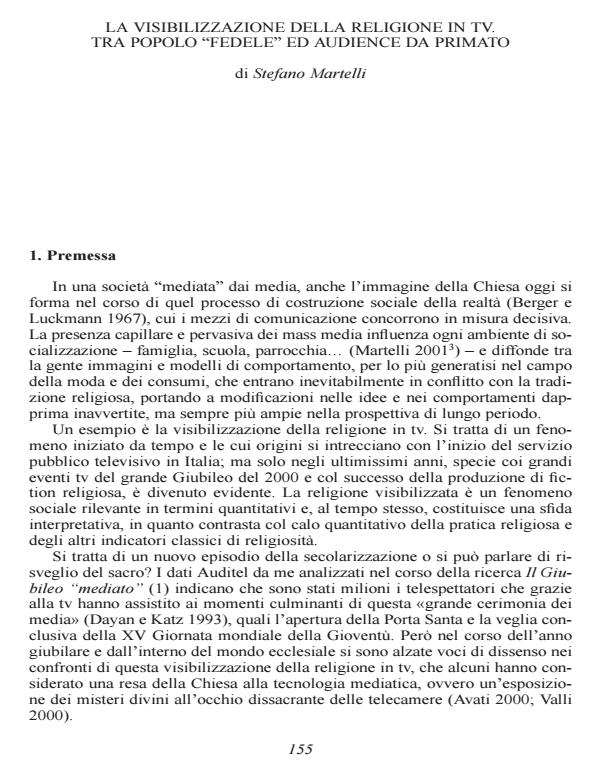La visibilizzazione della religione in TV. Tra popolo fedele ed audience da primato
Journal title SOCIOLOGIA DELLA COMUNICAZIONE
Author/s Stefano Martelli
Publishing Year 2005 Issue 2004/35-36
Language Italian Pages 15 P. File size 67 KB
DOI
DOI is like a bar code for intellectual property: to have more infomation
click here
Below, you can see the article first page
If you want to buy this article in PDF format, you can do it, following the instructions to buy download credits

FrancoAngeli is member of Publishers International Linking Association, Inc (PILA), a not-for-profit association which run the CrossRef service enabling links to and from online scholarly content.
In the author’s proposal, the reason why religion is coming more visible in the Italian neo-TV is an effect of the de-secularization process, that is an aspect of a wider social-cultural trend to the rediscovery of Catholicism in a society that nevertheless remains secularized. This rediscovery is occurring through new modalities, that are allowed by the great social spreading of TV; but these modalities seem to be a distortion as regards the religiosity model proposed by the religious institutions. This general thesis has been tested in front of the empirical reality by a comparative analysis on Auditel data related to the national TV networks in the period 1999-2001 about four types of religious programmes: the Sunday mass, the programmes for Catholic, Protestant and Jew audience, the fictions of religious matter and the outstanding ceremonies of the Jubilee 2000. The results of this analysis have confirmed the hypothesis of the research that had foreseen a Jubilee effect on the TV audience, that is an increasing number and a variation in the socio-demographic composition that has resulted nearer to the composition of population; this effect has been fading in the year 2001, at the end of the extraordinary event. Coming visible in TV involves for religion the transformation of the institutional form of religiosity. TV has at least three effects on religion: the con-fusion and reversibility between sacred and profane; a dys-intermediation of the local hierarchies, and the coming visible to a global level. These transformations are an interpretative challenge for both sociology and religious institutions; they are forced to ask themselves questions about the emergent religiosity model in the post-modern society.
Stefano Martelli, La visibilizzazione della religione in TV. Tra popolo fedele ed audience da primato in "SOCIOLOGIA DELLA COMUNICAZIONE " 35-36/2004, pp , DOI: